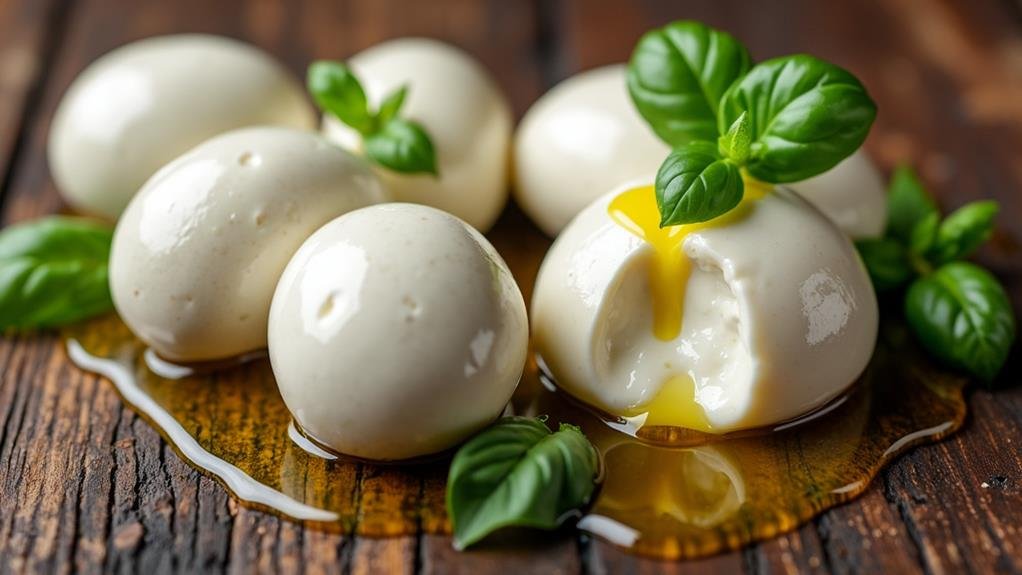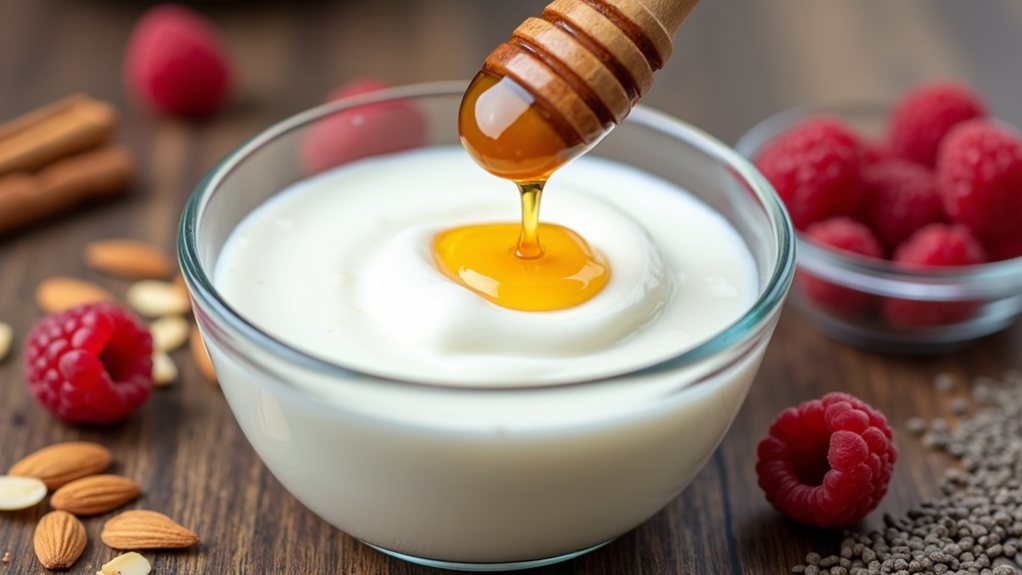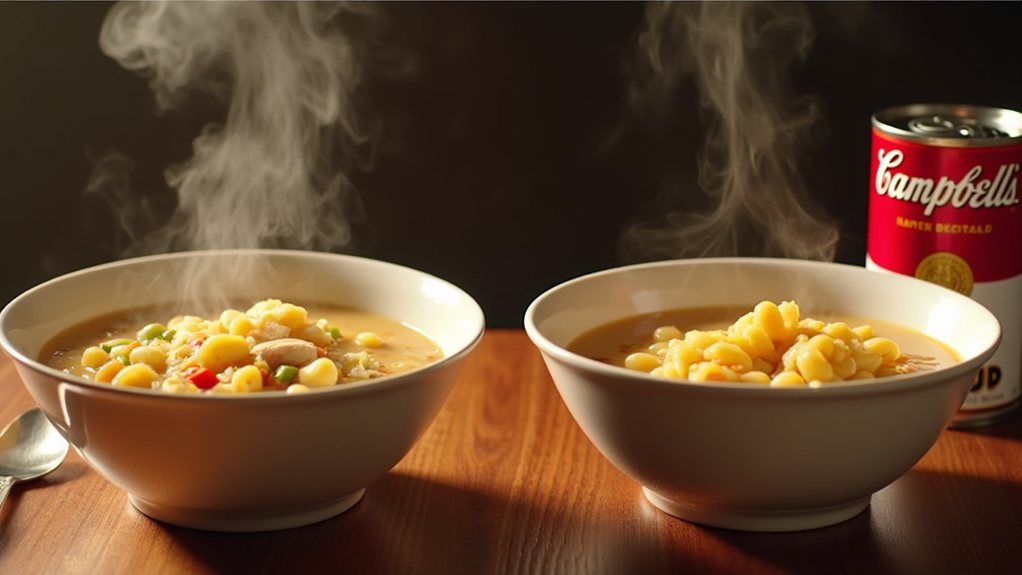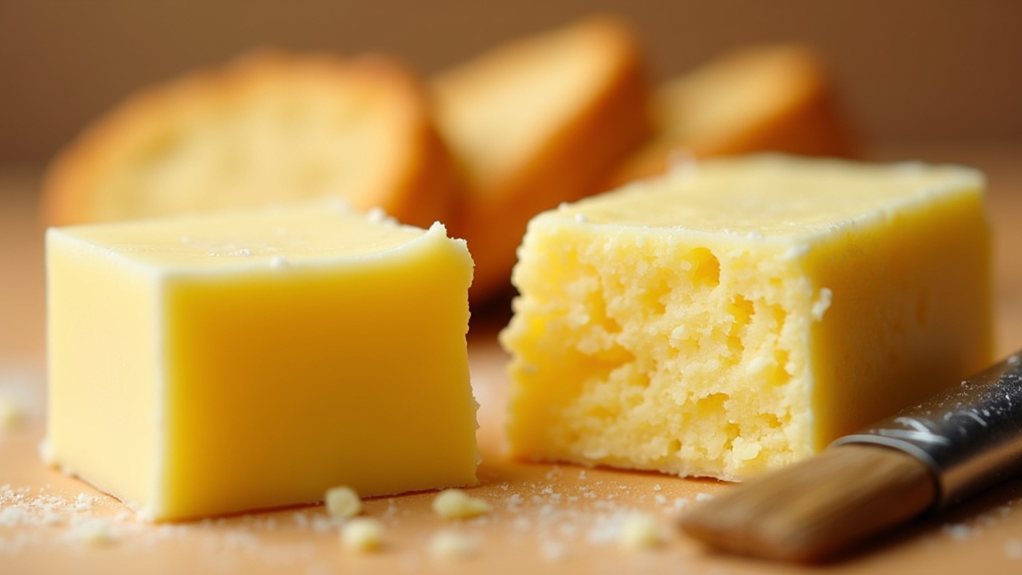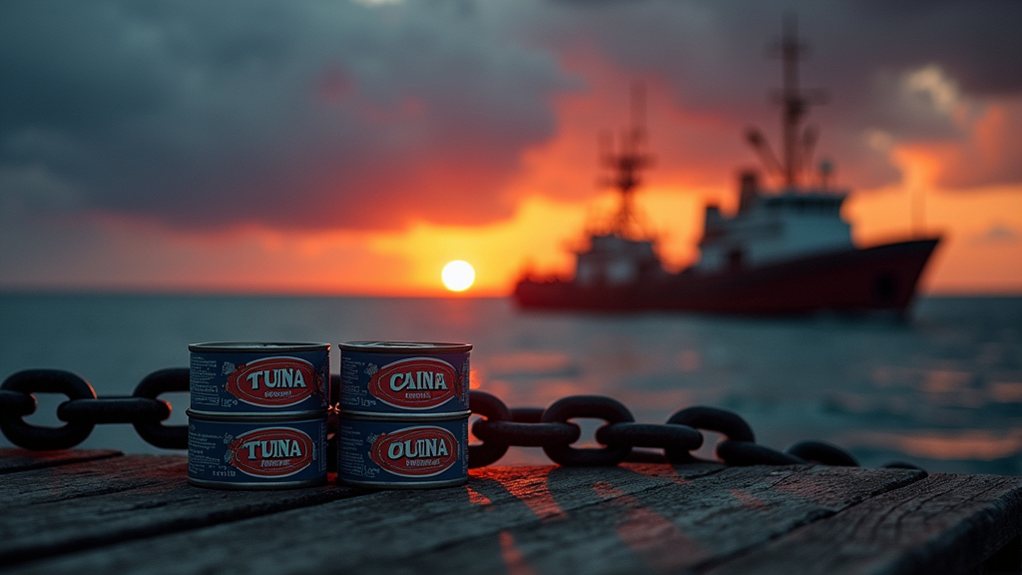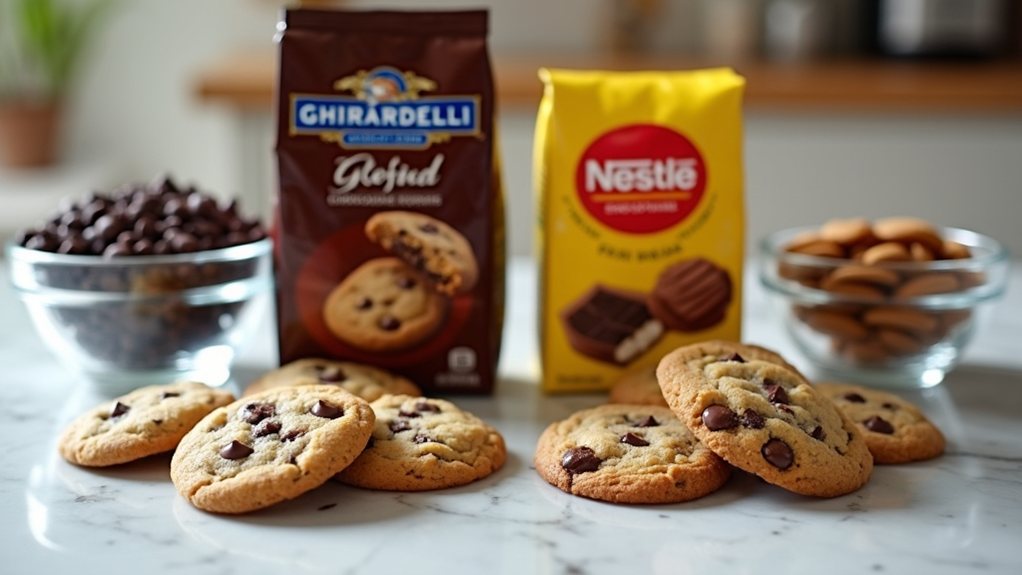Mozzarella and burrata, both Italian cheeses, showcase distinct differences in production and culinary uses. Mozzarella, originating from the Campania region, is made from water buffalo milk and features a soft, stretchy texture with a mild flavor. Conversely, burrata hails from Apulia, consisting of a mozzarella shell filled with creamy stracciatella. While mozzarella is versatile, perfect for pizza and pasta dishes, burrata enriches appetizers and salads with its rich taste. Freshness is crucial; mozzarella is best consumed within five days, whereas burrata should be enjoyed immediately. Understanding these distinctions enriches the appreciation of these beloved cheeses, revealing their unique qualities and uses.
Origin and Production Methods
Mozzarella, a cheese type, is deeply rooted in Southern Italy, specifically the Campania region. This cheese is traditionally made from water buffalo milk, highlighting its significance in Italian gastronomy. The production technique, known as pasta filata, involves heating and stretching curds, resulting in mozzarella's distinct smooth texture.
On the other hand, burrata, another Italian cheese, originates from the Apulia region. It features a creamy filling of stracciatella cheese inside a mozzarella outer layer. The stracciatella is crafted by infusing firm mozzarella strands with heavy cream, creating a rich, milky consistency that sets burrata apart from mozzarella.
The differences between mozzarella and burrata arise from their production techniques and culinary applications. Mozzarella is highly versatile, ideal for cooking and baking, while burrata is celebrated as a fresh, indulgent option, perfect for enhancing salads or accompanying crusty bread. By exploring these cheese types, consumers can better appreciate their unique characteristics, enriching their culinary journeys and diversifying their cheese selections.
Texture and Flavor Profiles
In exploring the texture and flavor profiles of Galbani mozzarella and Burrata di Andria, one can appreciate the distinct characteristics that define each cheese. Galbani mozzarella, often regarded as the versatile option, features a mild, milky flavor with a slightly salty undertone. Its texture is soft and elastic, making it ideal for a variety of dishes. On the other hand, Burrata di Andria presents a unique experience, showcasing a delicate outer layer of mozzarella that encases a rich, creamy filling known as stracciatella. This luxurious filling, crafted from shredded mozzarella soaked in heavy cream, offers an indulgent mouthfeel and a decadent taste.
Here are three notable differences between the textures and flavors of these cheeses:
- Galbani mozzarella: Soft, elastic texture with a subtle, milky flavor; best enjoyed fresh in salads or on pizza.
- Burrata di Andria: Creamy interior with a delicate mozzarella shell; rich and luscious taste that elevates pasta dishes and antipasti.
- Freshness: Galbani mozzarella is best consumed within five days, while Burrata di Andria should be enjoyed immediately to fully appreciate its exquisite stracciatella filling.
Understanding these profiles allows cheese enthusiasts to make informed choices, enhancing their culinary experiences with the unique qualities of each cheese.
Culinary Uses and Pairings

Cheese lovers seek the ideal culinary applications for their preferred varieties, and both Mozzarella and Burrata offer unique opportunities in the kitchen. Mozzarella's versatility shines in numerous dishes; it melts superbly, making it perfect for Neapolitan pizza, baked pasta dishes, or even classic mozzarella sticks. Its mild, slightly salty flavor enhances rich marinara sauces and fresh vegetables, elevating the overall taste experience of various recipes.
Conversely, Burrata is best savored fresh, highlighting its creamy stracciatella core. It pairs exquisitely with a drizzle of premium olive oil, fresh basil, and artisanal bread, creating an elegant appetizer. Additionally, Burrata complements sweet fruits like figs or peaches, along with vibrant salads, enriching their flavor with its velvety texture.
Both cheeses can be served together, offering a delightful contrast in taste and texture that enhances any dining experience. Exploring different recipes allows home cooks to appreciate the distinct qualities of each cheese, from Burrata's luxurious creaminess to Mozzarella's robust melting properties. Ultimately, each cheese can shine based on the culinary context, ensuring that both Mozzarella and Burrata remain staples in the kitchen.
Freshness and Storage Tips
To preserve the quality of fresh Mozzarella and Burrata, it's essential to recognize their specific storage needs. Both dairy products require careful handling to showcase their delightful flavors and textures.
Here are three vital storage tips for these cheeses:
- Maintain Moisture: Fresh Mozzarella should be kept in water or brine to help maintain its moisture levels. Burrata, such as that from *BelGioioso*, is best stored in its original container, ideally surrounded by cream or whey.
- Stable Refrigeration: Store both types of cheese in a refrigerator set at a consistent cool temperature. Fluctuations in temperature can negatively impact their quality.
- Quick Consumption: For optimal flavor, enjoy fresh Mozzarella within five days of purchase. Burrata, particularly from *Calabro*, is most enjoyable when consumed fresh, ideally within a couple of days, to fully savor its rich, creamy center.
Unique Qualities and Serving Suggestions

Recognizing the distinctive characteristics of mozzarella and burrata deepens the enjoyment of these cherished dairy products. Mozzarella, with its subtly milky taste and smooth texture, is incredibly adaptable and perfect for culinary creations. It shines in recipes such as lasagna and fried mozzarella sticks, where its melting properties are showcased. For optimal freshness, mozzarella should be eaten within five days and is best stored submerged in water or brine.
On the other hand, burrata provides a decadent experience thanks to its rich stracciatella center. This cheese consists of mozzarella strands soaked in heavy cream, encased within a tender mozzarella shell. To fully appreciate its sumptuous filling, burrata should be served fresh, pairing beautifully with extra virgin olive oil, fresh basil, and artisan bread. It also enhances the flavors of sweet fruits and salads, thanks to its creamy consistency.
Both cheeses can be enjoyed side by side, offering a delightful contrast in texture and flavor. Exploring various recipes can highlight the unique qualities of each cheese, enabling creative culinary expressions that appeal to a wide range of tastes and occasions.
